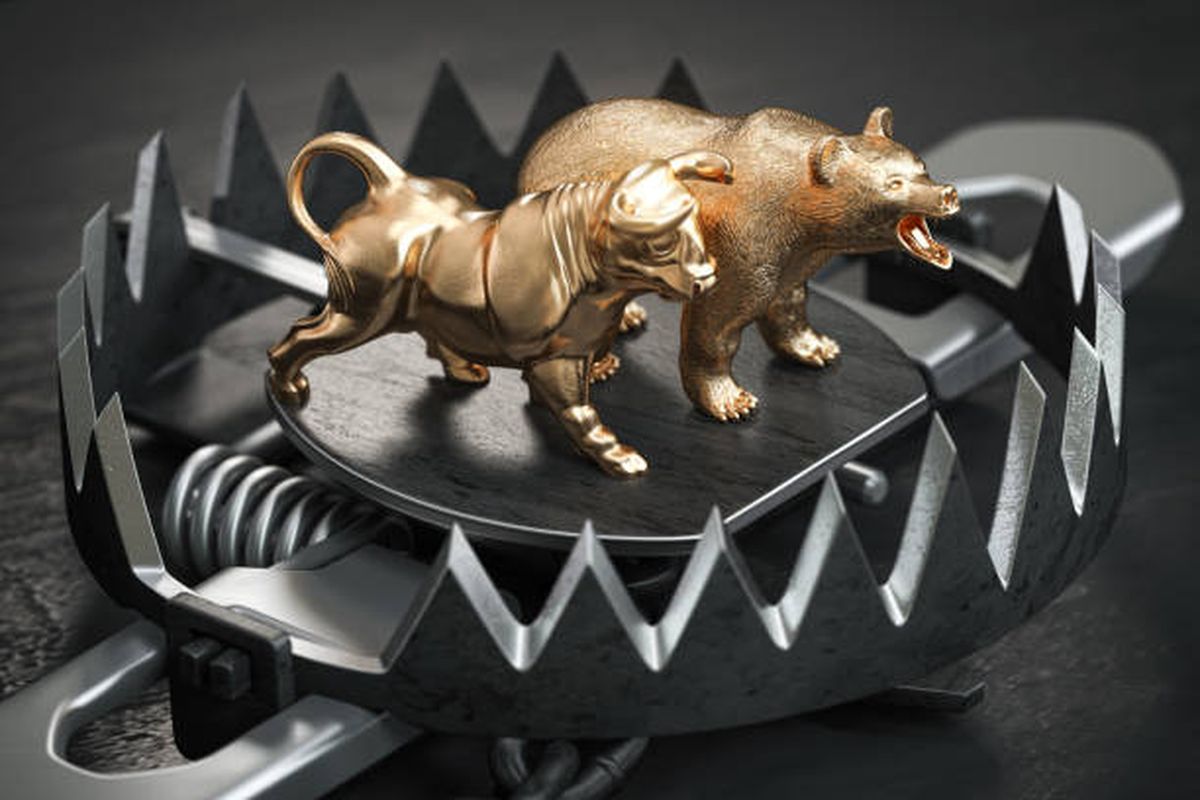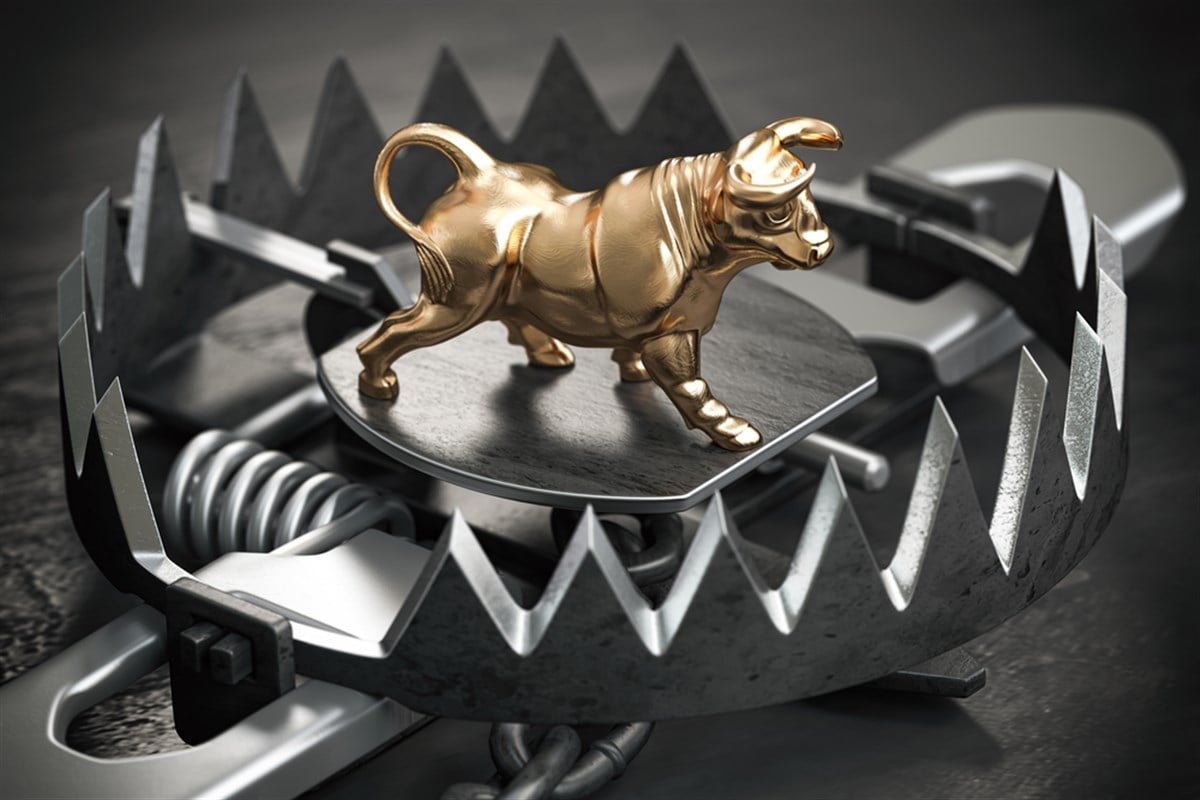Bear and bull traps have caused many investors to make irrational and unwise decisions that impacted their bottom line. What are these bear and bull traps, and how can you avoid falling for them?
If you are involved in crypto trading, you need to know a few things to look out for. The cryptocurrency market is as complex as it is thrilling, and for any trader, various pitfalls need to be avoided to make the most of your investment. Some of these pitfalls include bear and bull traps.
Bear and bull traps exist in the traditional asset markets and the crypto industry. The traps have seen most investors engage in unwise trading, affecting their portfolios.
Bear Trap In Trading
A bear trap in the trading space is a scenario where an asset initially seems to be trading upwards in price. Then, the asset in question loses some of its value and seems like it will drop into a bear market. As traders encounter these market conditions and signals, they rush to respond instantly, opening short positions.
A short position needs traders to borrow shares of an asset from a broker using a margin account. The key idea is to sell the instruments and then rebuy them when the price declines and make a profit. A bear trader thinks that an asset or the market, in general, is about to drop and tries to profit from it.
This method involves leveraging strategies like short positions to make it happen. But as stated earlier, a bear trap is just a trap. The drop does not last, and soon after, the price begins to rise again after the bear traders have been ‘tricked’ into taking short positions.
Bear traps exist in nearly all asset markets, and traders put a lot of time and effort into avoiding falling victim to them.
Bull Trap Overview
A bull trap works like a bear trap but in the reverse mode. That happens whenever an asset increases in value and breaks above a particular resistance point. Normally, breaking above major resistance points might signal that an asset is almost entering a bull run to become more valuable. In that context, most traders open long positions to profit from the price movement.
The idea is that if they can purchase the asset when the price is beginning to rise, they can later resell it for a significant profit. A bull trader, in this case, tries to exploit the upward price movements.
But just like in the case of a bear trap, a bull trap sees the asset’s value record a reversal shortly after it breaks key resistance points. The trader would have hoped to resell the asset at a profit but now finds themselves with an asset that is losing its value.
The bull traps exist in almost all asset markets and concur for many reasons. They could happen because traders lose momentum after breaking resistance barriers, leading most to sell off their assets, and more selloffs triggered by stop-loss orders.
Bear And Bull Traps In Crypto
Bull and bear traps exist in all asset markets, and the crypto industry is not exempt. Most cryptos experience both traps, and they manifest in distinct ways. Consider altcoins that see abrupt hype within the sector and have their value surge rapidly. This hype often happens in tokens linked to particular events, such as the cryptos released after the death of Queen Elizabeth the Second.
Most crypto investors might purchase these coins expecting their value to keep rising. But, for some reason, these tokens start to drop in value, and the trader sees their investment plan fall apart. That is a perfect example of a bull trap.
A bear trap would comprise a crypto that seems to be on the decline. Maybe it is a token that has seen multiple swings, with some investors planning to buy it at a lower price and resell it for a profit.
But then, the value of the token increases, putting them in awkward positions. Due to the volatility in the Crypto space, bull and bear traps are common and can arise due to trends in the sector, the activity of whales, media reports about the asset, and more.
Role Of Psychology In Bull And Bear Traps
One thing traders must know about the bull and bear traps is that they are triggered by psychology. First, there exists the unidirectional attitude that most investors have towards the market. It means they consider themselves bear traders or bull traders and only train to operate in one of these conditions.
On that note, they are more prone to fall into a bull or bear trap since they are only chasing one market direction and are not adequately flexible to operate in whatever the market throws at them.
Furthermore, the classic case of fear of missing out (FOMO) makes investors panic about not quickly profiting from a market movement. Hence, rather than wait and observe the market progression, they act quickly and get entangled in traps.
Crypto Bull And Bear Traps: Examples
We have already explained that bull and bear traps are common in the crypto space, and many examples are available. For example, Solana (SOL) recorded a drop of around 42% in the first week of June 2023 and appeared to be in a free fall.
Then, the token started rallying the next week, reaching key resistance levels of near $15. All the expectations of this coin continuing to drop faded, and all traders who had opened short positions were disappointed.
Then there is Bitcoin (BTC), which has recorded multiple bull traps in recent years. In April and August 2021, Bitcoin recorded a price drop after surging for a while. In April, it crossed the $54,000 zone, only to lose 17% of its value soon after.
Related:Solana Takes the Lead in Weekend Crypto Trading, Beating Out Bitcoin and Ethereum
Identifying And Avoiding Bull And Bear Traps
Now that it is clear what bull and bear traps are, you need to know how to discover and avoid them to enjoy your trading experience.
Consider the following to spot and avoid a bear trap:
- Look at key indicators – when you want to open a short position for an asset, review its Fibonacci levels and relative strength index (RSI) divergence. Any asset that does not close below the critical Fibonacci levels might be a sign of a bear trap.
- Review key resistance levels – one of the straightforward signs of a bear trap is the asset’s price experiencing a reversal after key resistance points. If the asset only reached a new all-time high or crossed a major milestone, you need to know if it seems to be trending in the opposite direction.
- Low volumes – always analyze the market to determine the current trading volumes for the asset. If the volumes are low, it is best to remain wary.
To discover and avoid a bull trap, consider the following:
- Key indicators – as is the case with a bear trap, reviewing things like RSI divergence is important. A high RSI signals heavy buying pressure, meaning the current price increase might not last long.
- Trading volume – just like in the case of the bear traps, low trading volumes might mean that the price movement is because of the activity of several whales and is not sustainable.
- Resistance levels – another dependable sign of a bull trap is an asset originally seeing lots of momentum but cannot cross certain resistance levels. That highlights a bull trap in the works.
The Takeaway
Trading any asset, mostly as complex as crypto, will never come without hiccups. Some things to look out for are bull and bear traps that can put any investors in an uncomfortable position in the market. Bull and bear traps have investors thinking they know the market’s trajectory and act accordingly, only to be bamboozled.
For any investor, always study the market and learn how to discover bull and bear traps so that when they happen, you will not be caught unaware.










